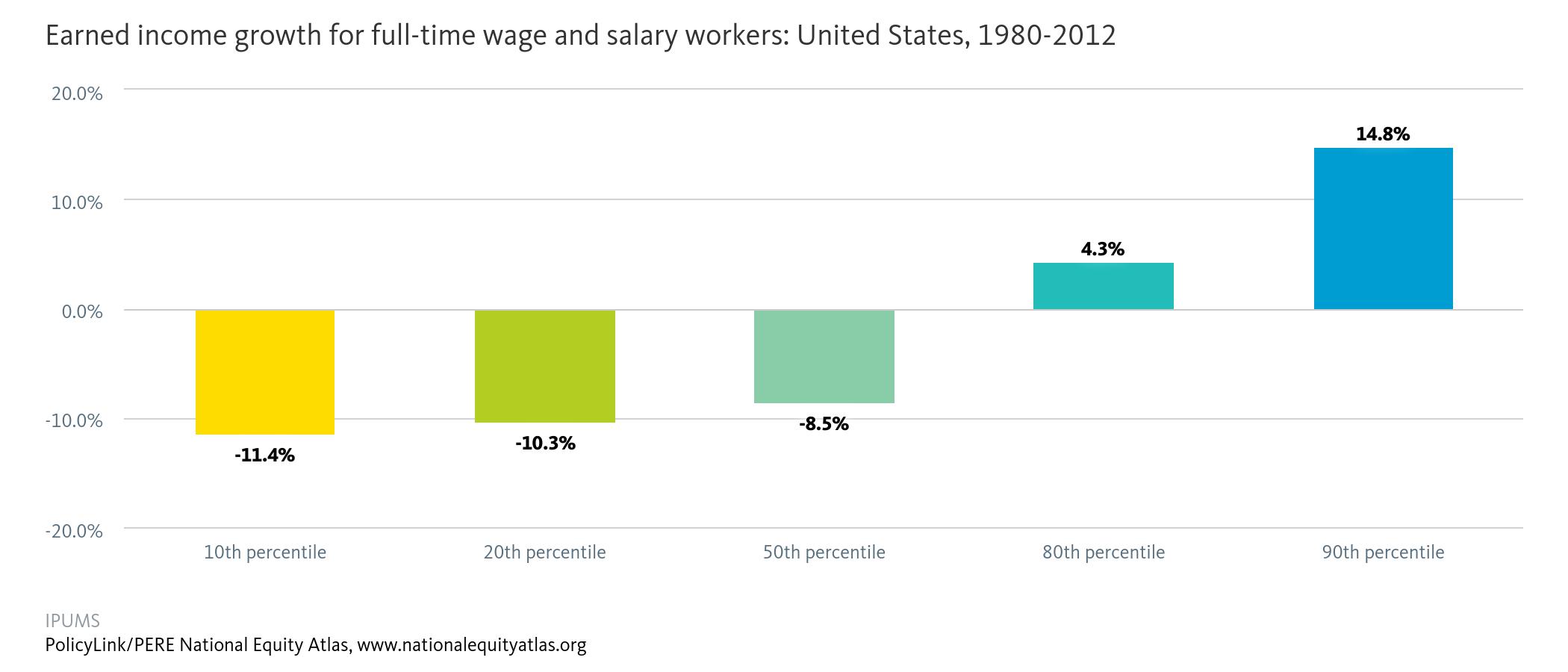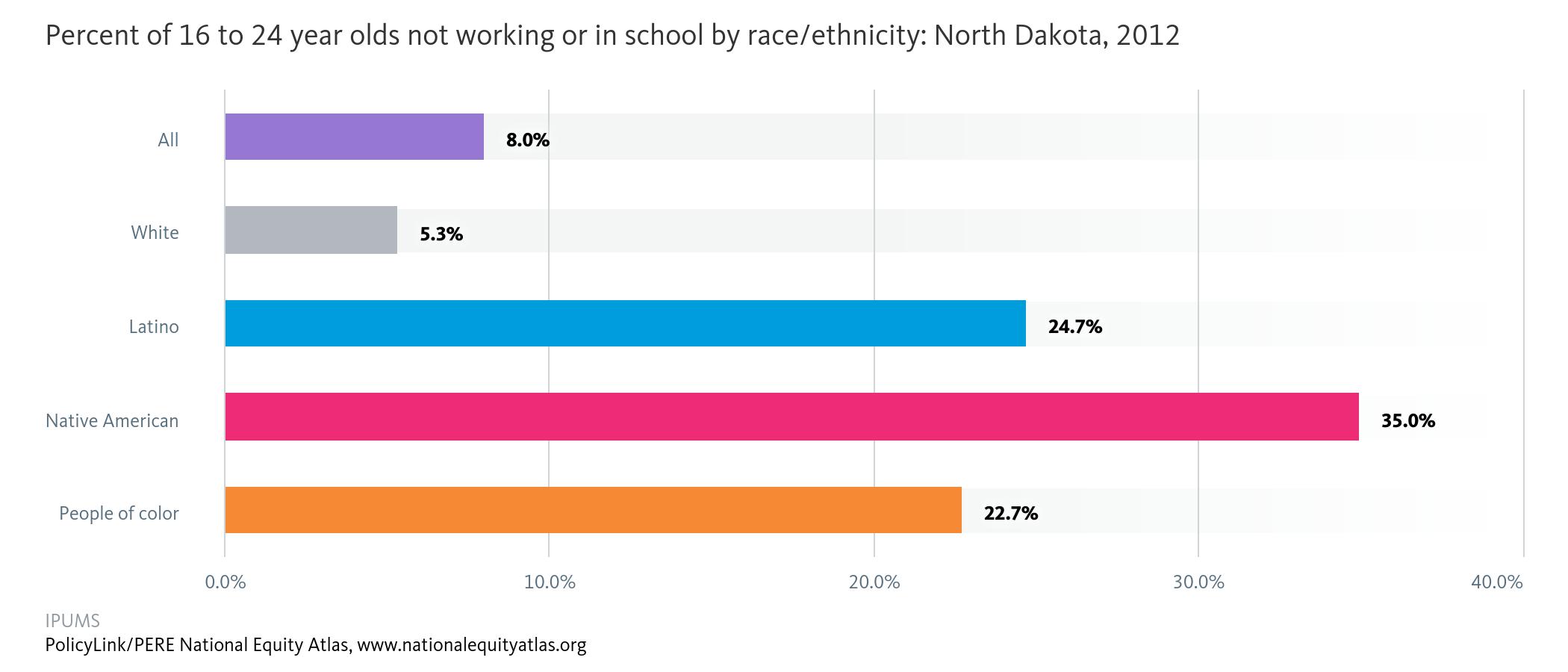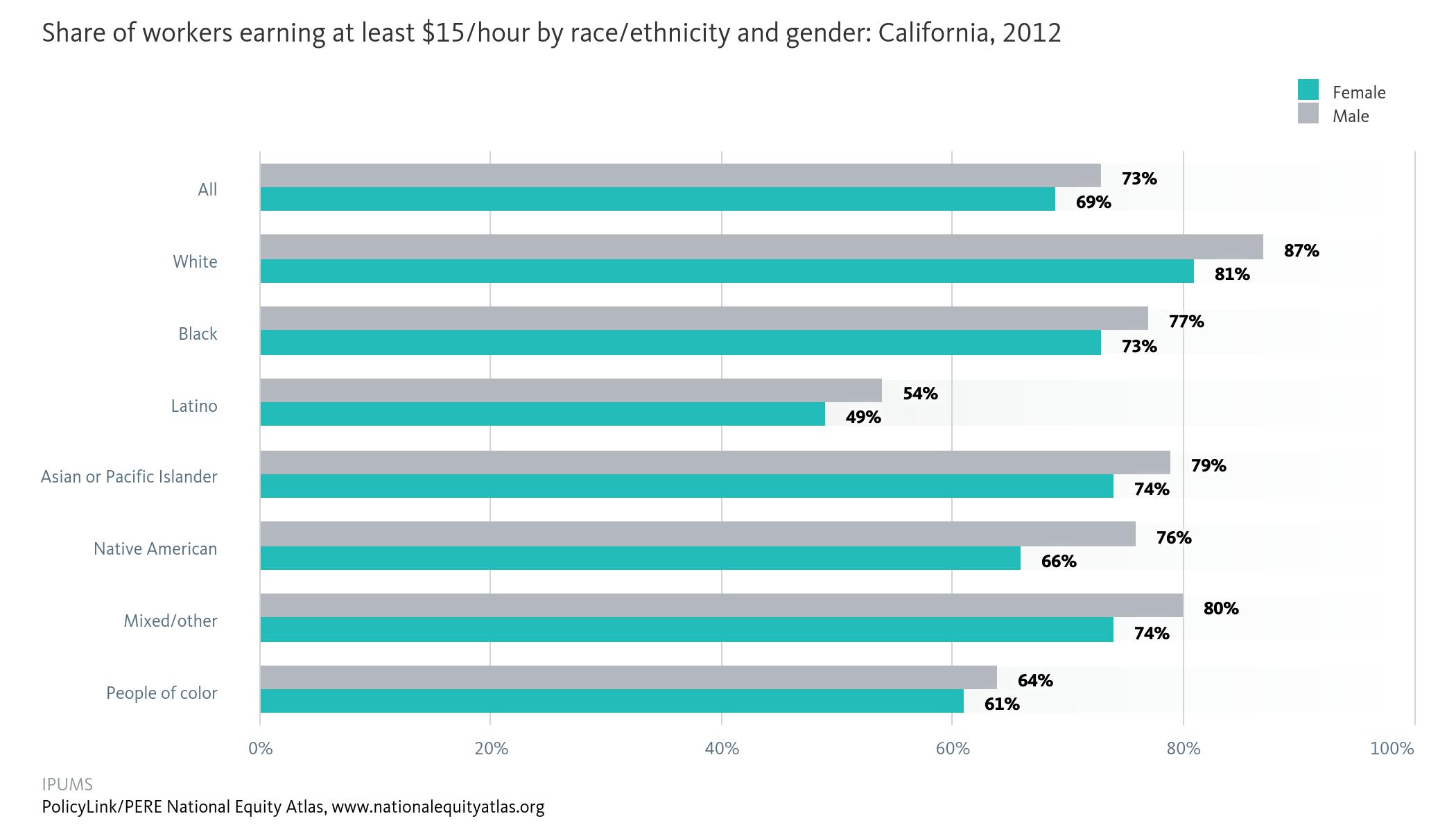Chart of the Week: #RentersDayofAction
To add equity data to the national dialogue about growth and prosperity, every week the National Equity Atlas team posts a new chart from the Equity Atlas related to current events and issues.
Today, thousands are taking to the streets across the country to protest rising and unaffordable rents in what organizers are calling the “largest renter-led protest in recent history.” In 2012, more than half (51 percent) of renters were spending more than 30 percent of their incomes on rent, but the rates are even higher in some of the nation’s largest 100 cities.
To lift up the #RentersDayofAction demands calling for an end to rising rents and unjust evictions, this week’s chart looks at housing burden for renters, or the percent of renter-occupied households spending more than 30 percent of their income on rent, among the largest 100 cities. Though cost-burdened households have decreased slightly among renters based on the latest data, the greatest benefits have gone to homeowners with a mortgage.
In 2012, 72 percent of renters in Hialeah, FL were housing burdened as were two in three Miami renters. The top five cities with the highest housing burdens were:
Housing is the single largest expense for most households and high housing costs squeeze household budgets leaving few resources to pay for other expenses, save for emergencies, or make long-term investments. The Urban Displacement Project, run by the University of California Berkeley, found that Bay Area cities with rent control laws saw less turnover in their renter populations and that rent control is most effective when paired with other tenant protections like just cause evictions policies. For a more extensive overview of strategies to resist gentrification, see Causa Justa Just Cause’s Development without Displacement report.
To view how affordability ranks in your community or how rates of housing burden vary by race/ethnicity or tenure, visit the National Equity Atlas and type in your city, region, or state. Download the charts and share them on social media using #RentersDayofAction and #equitydata.


